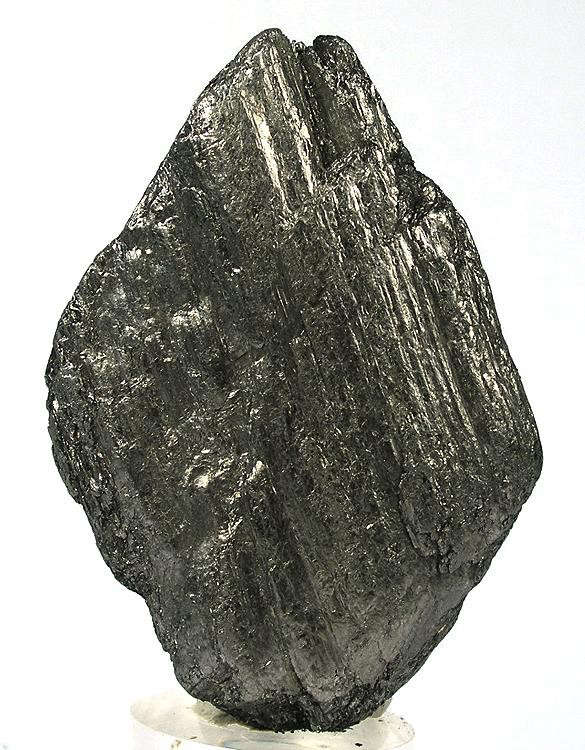Keywords: Graphite Products, Graphite Crucible, Graphite Mold...
Keywords: Graphite Products, Graphite Crucible, Graphite Mold...
Graphite Properties & Graphite Uses
Graphite is a crystal of carbon. It is a non-metallic material with silvery gray color, soft quality and metallic luster. Mohs hardness is 1~2, specific gravity is 2.2~2.3, and its bulk density is generally 1.5~1.8.
The melting point of graphite is extremely high, and it begins to soften and melt when it reaches 3000°C under vacuum. At 3600°C, graphite begins to evaporate and sublimate. The strength of general materials gradually decreases at high temperatures, while graphite is heated to 2000°C. The strength is doubled compared to normal temperature, but the oxidation resistance of graphite is poor. The oxidation rate gradually increases with the increase of temperature.
Graphite's thermal conductivity and electrical conductivity are quite high, its electrical conductivity is 4 times higher than stainless steel, 2 times higher than carbon steel, and 100 times higher than ordinary non-metallic. Its thermal conductivity not only surpasses metal materials such as steel, iron, and lead, but also decreases in thermal conductivity with increasing temperature. This is different from general metal materials. At extremely high temperatures, graphite even tends to be in an adiabatic state. Therefore, under ultra-high temperature conditions, graphite's thermal insulation performance is very reliable.
Graphite has good lubricity and plasticity. The friction coefficient of graphite is less than 0.1. Graphite can be expanded into a breathable and translucent sheet. The high-strength graphite is so hard that it is difficult to process with diamond tools.
Graphite is chemically stable, resistant to acids, alkalis, and organic solvents. Graphite has more and more excellent properties and is widely used in modern industry.
1. Refractory materials: Graphite and its products have the properties of high temperature resistance and high strength. It is mainly used in the metallurgical industry to manufactu re graphite crucibles. In steelmaking, graphite is commonly used as a protective agent for steel ingots and the lining of metallurgical furnaces.
re graphite crucibles. In steelmaking, graphite is commonly used as a protective agent for steel ingots and the lining of metallurgical furnaces.
2. Used as conductive material: used in the electrical industry to manufacture electrodes, brushes, carbon rods, carbon tubes, the positive electrode of mercury positive current, graphite gaskets, telephone parts, coatings for TV picture tubes, etc.
3. As wear-resistant lubricating material: graphite is often used as a lubricant in the machinery industry. Lubricating oil can not be used under the conditions of high speed, high temperature and high pressure, and graphite wear-resistant materials can work at (1) 200~2000 ℃ at a high sliding speed without using lubricant. Many equipments for transporting corrosive media widely use graphite materials to make piston cups, seal rings and bearings. They do not need to add lubricating oil during operation. Graphite emulsion is also a good lubricant for many metal processing (wire drawing, tube drawing).
4. Graphite has good chemical stability. Specially processed graphite has the characteristics of corrosion resistance, good thermal conductivity, and low permeability. It is widely used in the manufacture of heat exchangers, reaction tanks, condensers, combustion towers, absorption towers, coolers, heaters, filters , Pump equipment. It is widely used in petrochemical industry, hydrometallurgy, acid-base production, synthetic fiber, papermaking and other industrial sectors, which can save a lot of metal materials.
5. For casting, sand turning, compression molding and high-temperature metallurgical materials: due to the small thermal expansion coefficient of graphite and resistance to rapid cooling and heat changes, it can be used as a casting mold for glassware. After using graphite, the ferrous metal can obtain accurate casting size and surface finish rate. High, can be used without processing or a little processing, thus saving a lot of metal. Powder metallurgy processes such as the production of cemented carbides are usually made of graphite materials for stamping and sintering boats. Single crystal silicon crystal growth crucibles, area refining vessels, support fixtures, induction heaters, etc. are all made of high-purity graphite. In addition, graphite can also be used as a vacuum smelting graphite insulation board and base, high temperature resistance furnace tube, rod, plate, grid and other components.
6. Used in atomic energy industry and national defense industry: graphite has good neutron moderator for use in atomic reactors. Uranium-graphite reactors are currently widely used in atomic reactors. The decelerating material in the nuclear reactor used for power should have high melting point, stability, and corrosion resistance. Graphite can fully meet the above requirements. The purity of graphite used in atomic reactors is very high, and the impurity content should not exceed dozens of PPM. Especially the boron content should be less than 0.5PPM. In the defense industry, graphite is also used to manufacture nozzles for solid fuel rockets, nose cones for missiles, parts for space navigation equipment, thermal insulation materials, and anti-ray materials.
7. Graphite can also prevent boiler fouling. Tests by relevant units have shown that adding a certain amount of graphite powder to the water (approximately 4-5 grams per ton of water) can prevent boiler surface fouling. In addition, graphite is coated on metal chimneys, roofs, bridges, and pipes to prevent corrosion and rust.
8. Graphite can be used as pencil lead, pigment and polishing agent. After special processing of graphite, various special materials can be made and used in relevant industrial sectors.